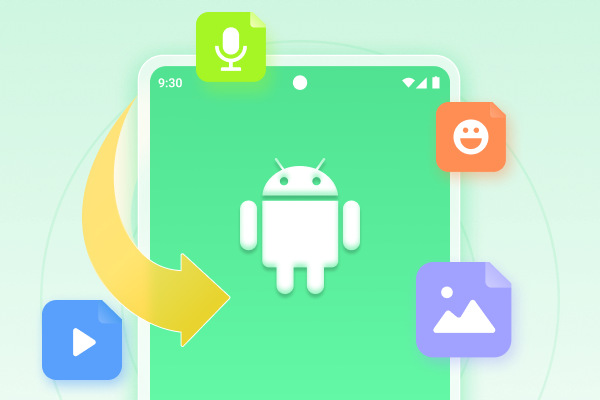How to Enable and Use On Screen Keyboard on Windows 11/10/8/7
On screen keyboard is a great way to type text and perform actions on your computer. If you have any issues with your physical keyboard, or you do not want to use that keyboard for some reason, you can enable and use the on-screen keyboard on your Windows computer.
This guide tells you how you can turn on this keyboard in various versions of Windows. You will then learn how to troubleshoot issues with this keyboard, in case you come across any.
- Part 1. How to Turn on and Use On-Screen Keyboard?
- Part 2. Windows 10 On Screen Keyboard Not Working, How to Fix?
- Part 3. Frequently Asked Questions about On Screen Keyboard
Part 1. How to Turn on and Use On-Screen Keyboard?
On-screen keyboard is available in multiple versions of the Windows operating system. The following shows how to activate it.
1. Turn on On-Screen Keyboard in Windows 10/11
You can activate Windows 10 on screen keyboard pretty easily by following the following steps.
- Open the Start Menu on your computer.
Search for osk and click the first entry that says On-Screen Keyboard.

The keyboard should open on your screen.
2. Turn on On-Screen Keyboard in Windows 8/8.1
If you use Windows 8 or 8.1 on your machine, you can enable the on-screen keyboard as follows.
Right-click on your taskbar and select Toolbars followed by Touch Keyboard.

- Your keyboard should open.
3. Turn on On-Screen Keyboard in Windows 7
On screen keyboard Windows 7 can be accessed from the Start Menu.
Open the Start Menu and head to All Programs > Accessories > Ease of Access > On-Screen Keyboard.

- The keyboard will launch on your screen.
Part 2. Windows 10 On Screen Keyboard Not Working, How to Fix?
If the Windows on screen keyboard is not working for some reason, there are some possible fixes you can apply.
1. Change Windows 10 Touch Keyboard Settings
Enabling an option in the Settings can actually make your on-screen keyboard work.
Head to Settings > Devices on your PC and click on Typing in the sidebar.

- Turn on the Automatically show the touch keyboard in windowed apps when there's no keyboard attached to your device option from the right pane.
2. Add the On-Screen Keyboard to Taskbar
You can add the on screen keyboard Windows 10 to your taskbar to easily access it without any issues.
- Search for osk from the Start Menu.
When the keyboard appears, click on the Pin to taskbar option.

- The on-screen keyboard will be added to your taskbar.
3. Change On-Screen Keyboard Startup Type to Automatic
It may be that the on-screen keyboard is not launching automatically when your machine starts. To fix this, you can change the startup type for your keyboard to automatica as below.
- Press the Windows + R keys, enter services.msc, and hit Enter.
- Find Touch Keyboard and Handwriting Panel in the list of items and double-click on it.
Choose Automatic from the Startup type dropdown menu and click on Apply followed by OK at the bottom.

The keyboard will now launch whenever your machine boots-up.
4. Uninstall problematic Windows updates
If you have recently installed any Windows updates, those might be causing keyboard on screen issues. You can fix that by removing the newly installed updates as below.
- Open Control Panel and click on Uninstall a program.
- Select View installed updates from the left sidebar.
Find the update that you think is causing issues, click on it, and select Uninstall at the top.

- The update will be removed.
5. Modify MonitorSize Value in Registry Editor
There is an option in Windows registry that defines the size of your on-screen keyboard. You should try changing the size in this registry editor and see if that helps fix the problem.
- Press Windows + R keys, type regedit, and press Enter.
Head to the following path in the registry. If the last directory is not available, create it.
HKEY_LOCAL_MACHINE\SOFTWARE\Microsoft\Windows\CurrentVersion\Explorer\Scalling

- Right-click anywhere blank and select New followed by String Value. Enter MonitorSize as the name.
- Double-click on this newly created entry and use 25 in its value field. Then, close the registry editor.
Part 3. Frequently Asked Questions about On Screen Keyboard
If you have any questions about the on-screen keyboard, the following might help you.
1. How do you get rid of an on screen keyboard?
You can get rid of an on-screen keyboard by heading to Settings > Ease of Access > Keyboard and turning off the Use the On-Screen Keyboard option.
2. How to Enable and Use On Screen Keyboard Mac?
On screen keyboard Mac is available as well you can use enable it as follows.
- Go to System Preferences > Keyboard on your Mac and enable Show Keyboard & Character Viewers in menu bar.
Click on your keyboard in the menu bar and select Show Keyboard Viewer.

Mac’s on-screen keyboard will appear.
3. How do I get the onscreen keyboard on Windows 10 login screen?
To enable on-screen keyboard on login screen in Windows 10, head to Control Panel > Ease of Access > Ease of Access Center > Use the computer without a mouse or keyboard and tick-mark Use On-Screen Keyboard.
Summary
On-screen keyboard in Windows is a pretty useful tool and you may want to use it on various occasions. If you are not sure how to launch it, the above guide tells you how to do that. It also shows what you can do if the keyboard does not work. And if you get any Windows errors or system problems, you can use Tenorshare Windows Boot Genius, the best Windows system repair tool to repair Getting Files Ready for Installation Stuck, Inaccessible Boot Device Error in Windows 10 etc. efficiently.
Speak Your Mind
Leave a Comment
Create your review for Tenorshare articles

Tenorshare UltData for Android
Best Android Data Recovery Software
Highest Data Recovery Rate














